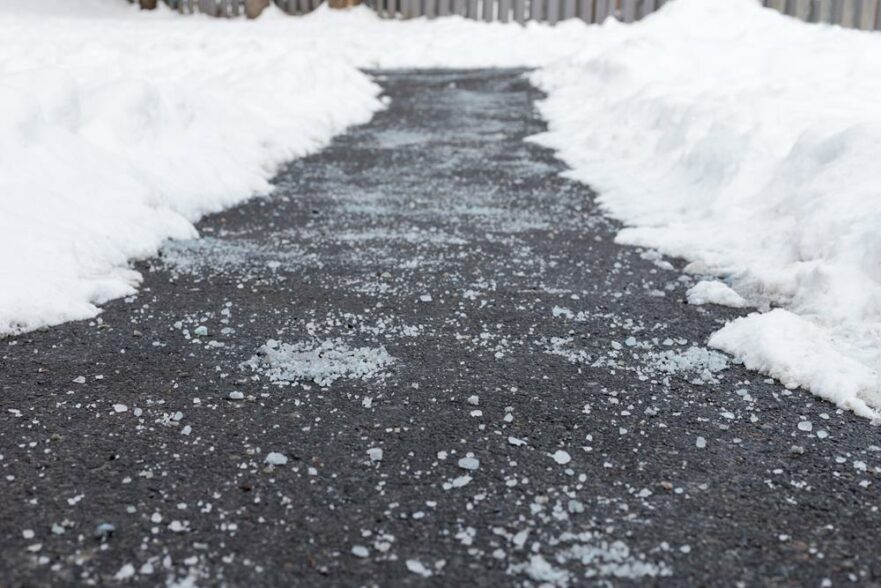July might not feel like the time to be thinking about snow and ice removal; people are more apt to think about an Italian ice or a snow cone. But in reality, now is the time to plan ahead for those hardy Chicago snow storms. Just knowing the truth about de-icers, salt and other methods of snow and ice mitigation isn’t just a step in the right direction, it can save your company money, too. Some of the biggest myths about snow and ice removal are, in fact, only a small part of winter storm control.
Myth: Chemical de-icers will melt snow, so I won’t have to shovel it.
Fact: Keep that shovel handy, because de-icers only do a couple of things:
- Make sure you read the instructions, because de-icers only work at certain temperatures
- It doesn’t melt the ice, but makes ice release its grip on the pavement
- Once the ice has hold of the pavement, de-icers can’t help much
- Chemical de-icers are aids only, not the solution to the problem.
Myth: More de-icer is better.
Fact: Too much de-icer makes slush, which is dangerous too.
If you use more de-icer on the parking lot or sidewalk in front of your store or office, (a) it won’t loosen already frozen ice, and (b) it makes a slushy goop that is just as dangerous to your customers and clients as an icy walkway. The best way to handle ice is to treat surfaces before it forms. If it beats you to the punch, shovel up the slush and keep sidewalks clean.
Myth: Using hot water to melt ice is a better idea for the environment.
Fact: It might be better for the environment, but the real winner is the lawyers of the people who slip on the black ice you create.
Hot water will eventually refreeze, often times causing invisible black ice. Now you’ve created a mess that will leave you wide open to lawsuits. Mother nature didn’t create that black ice, you did. Your customers run the risk of a slip and fall accident due to a very bad idea. Stick to the chemicals or let the pros manage your ice for the best results. Just remember, more de-icer is not better.
Myth: Snow and ice removal should be done at night when the parking lot is empty.
Fact: No, it’s best to remove snow and ice as it’s happening.
If snow is falling at night, then yes, please remove it then and thank the Lord it fell when the lot was empty for a quicker clean up. However, don’t wait until a lot is empty to plow. Snow should be removed just after it falls to prevent it compacting and freezing over. Additionally, if the sun shines after the storm, it will help to melt whatever snow is left clinging to the parking lot and walkways.
Ice management is actually most effective before it forms. And remember – Ice melting chemicals only work at certain temperatures. Chicago winter nights might be too cold for de-icers to work if you wait until lots are empty.
SIDEBAR: De-icers are also hard on the water supply and the animals and birds using the water. Keep that in mind before you shovel snow out of your parking lot and into storm drains leading to the water supply. Here are a few of the most used chemicals and the temperatures at which they work best:
- Sodium chloride – 15 degrees Fahrenheit
- Magnesium chloride – negative 10 degrees
- Calcium chloride – negative 20 degrees
- calcium magnesium acetate – 20 degrees
Now, this involves a lot of work on your part including the frustration and frostbite. On the other hand, you could call the experts at Brancato Snow Removal and let us save you the time, money and frustration. Frostbite is optional. So go have a snow cone and contact us for more information.

